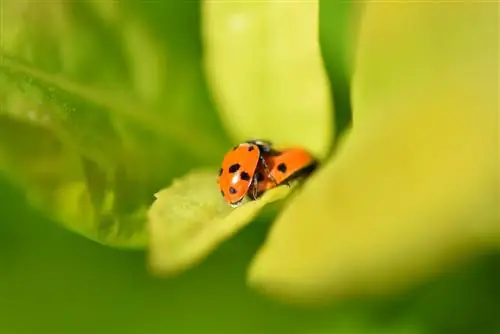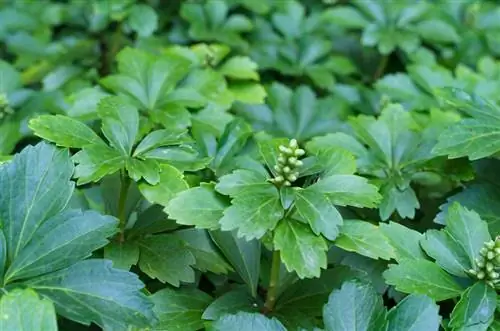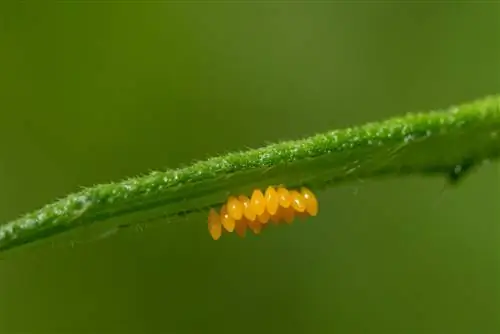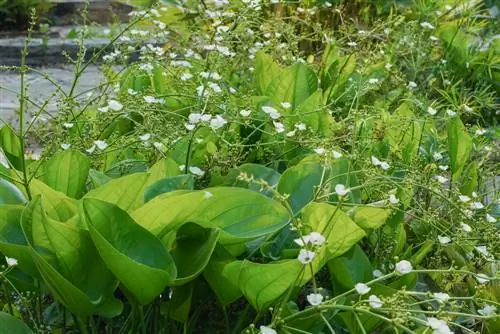- Author admin [email protected].
- Public 2023-12-16 16:46.
- Last modified 2025-01-23 11:22.
Ladybirds are good friends of every hobby gardener with their culinary preference for pests. Of course, we're interested in how the spotted guys reproduce - and whether you can encourage their reproduction. Let's take a closer look at both.

How can the reproduction of ladybugs be supported?
Ladybird reproduction begins with copulation in late winter, followed by egg laying and larval development. In order to promote reproduction in the garden, natural wintering conditions such as piles of leaves, natural stone walls or insect hotels as well as a species-rich garden design can be created.
The Ladybug Life
A ladybug's life is divided into the following stages:
- Egg
- Larva
- Pupation
- Imago (adult beetle)
One generation is produced every year. As an imago, a ladybird lives for one, sometimes two years.
Mating and larval development in the natural habitat
The annual cycle of ladybirds begins relatively early, in late winter. As soon as they wake up from hibernation, the beetles begin looking for a partner. When a couple comes together, copulation occurs, which can take quite a long time. Depending on the condition of the beetles and the environmental conditions, a pair needs between half an hour and a full 18 hours! The male sits on the female from behind and holds her tightly.
A female can be mated by up to 20 different males. However, it is usually fertilized after one mating and can lay eggs. It produces up to 400 of these, which it deposits in small groups, preferably on the undersides of leaves or on tree bark. Some species also lay their eggs individually.
After 5-8 days, the larvae hatch and begin a development period of one to two months. The duration depends on the ambient temperature, humidity and food availability. Towards the end, the larvae pupate in a mummy pupa, in which they develop into the finished beetle within about a week and a half.
How to promote reproduction
If you want to encourage ladybugs in the garden, this is a good idea. In order for the lucky pest killers to multiply well, it is best to create favorable wintering conditions for them. After the winter break, the still weakened beetles don't want to fly around for a long time looking for a romantic partner, but rather get started as soon as possible. Heaps of leaves left lying around, natural stone walls or insect hotels can be beneficial.
In general, a natural, species-rich and not too tidy garden design is also favorable. Here the beetles find more food and shelter.
You can also specifically propagate ladybugs in your own vivarium. You can find detailed instructions here.






